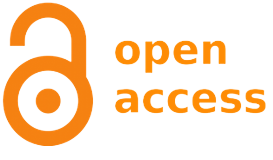Creative ecological intuition in economic decision-making in democracy: the case of Banco Finapop
Abstract
The theory of two systems (see Kahneman, 2011) in its several versions assumes that human decision-making is based on two cognitive systems, one that is automatic, fast, acting with minimal cognitive effort, intuitive (see Morewedge & Kahneman, 2010) and mostly unconscious, and one that is reflexive, slow, acting with intense cognitive effort, rational and fully conscious. In this work we investigate the theory of the two systems and their application in the economy of Democratic Governments with special emphasis on Kahneman's Two Systems Theory (2011). We consider his approach incomplete and limited in accounting for the intuitive process that drives decision making. This limitation leads us to argue for the existence of a third system in decision-making in Economy, the creative ecological intuition based on the attunement between affective drives and direct perception of affordances, addressing not only the dispositions and goals of agents, but also the social and environmental responsibility of corporations and governments. We argue that the third decision-making system we propose implies a concept of intuition that is different from the type of association process discussed by Morewedge and Kahneman (2010), and give an example of the third system operation the decision-making process that led to the formation of theFinapop Bank, in Brazil.
Downloads
DECLARATION OF ORIGINALITY AND COPYRIGHTS
I Declare that current article is original and has not been submitted for publication, in part or in whole, to any other national or international journal.
The copyrights belong exclusively to the authors. Published content is licensed under Creative Commons Attribution 4.0 (CC BY 4.0) guidelines, which allows sharing (copy and distribution of the material in any medium or format) and adaptation (remix, transform, and build upon the material) for any purpose, even commercially, under the terms of attribution.
Read this link for further information on how to use CC BY 4.0 properly.























